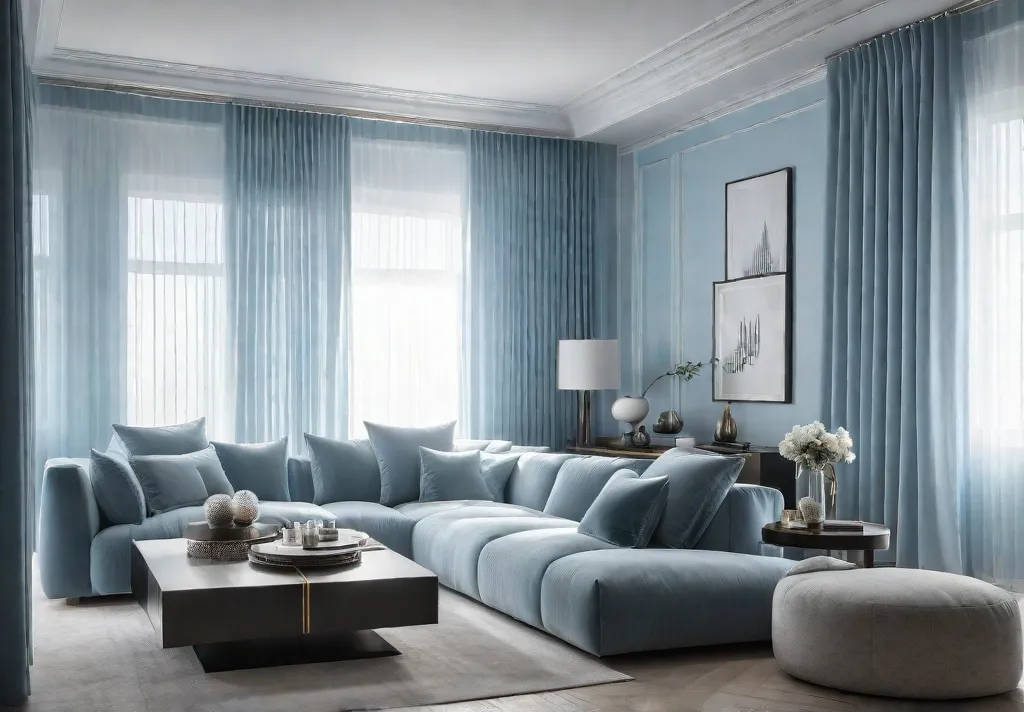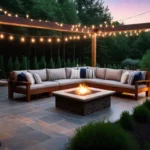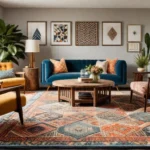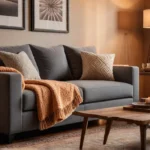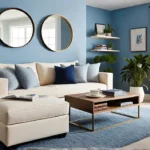Have you ever stepped into a cozy living room and felt an inexplicable warmth and comfort? The secret often lies in the thoughtful use of design elements that create an illusion of spaciousness and depth. One such element that can work wonders in small living rooms is wallpaper. Strategically chosen and applied, wallpaper can transform even the most compact spaces into inviting havens that feel open, airy, and full of character.

Imagine a living room where the walls seem to recede, drawing your gaze upward and outward, creating a sense of expansiveness that belies its modest square footage. This is the power of wallpaper when used as a tool for visual trickery. With the right patterns, colors, and placement, wallpaper can redefine the boundaries of a small living room, making it feel larger, brighter, and more inviting.
Light-Colored Wallpaper: Reflecting Brightness and Openness
Light-colored wallpaper is a true ally in the realm of small living room design. As the renowned designer William Morris once said, “Have nothing in your house that you do not know to be useful or believe to be beautiful.” Light hues add beauty and serve a practical purpose: reflecting more light and creating an airy, open ambiance.
The psychology behind this effect is rooted in our perception of color. Light tones, such as soft whites, pale grays, and pastel shades of blue and green, have a calming, expansive quality that can make a room feel up to 10% larger. Our brains interpret these colors as receding, allowing the walls to seemingly melt away, making the space more open and inviting.
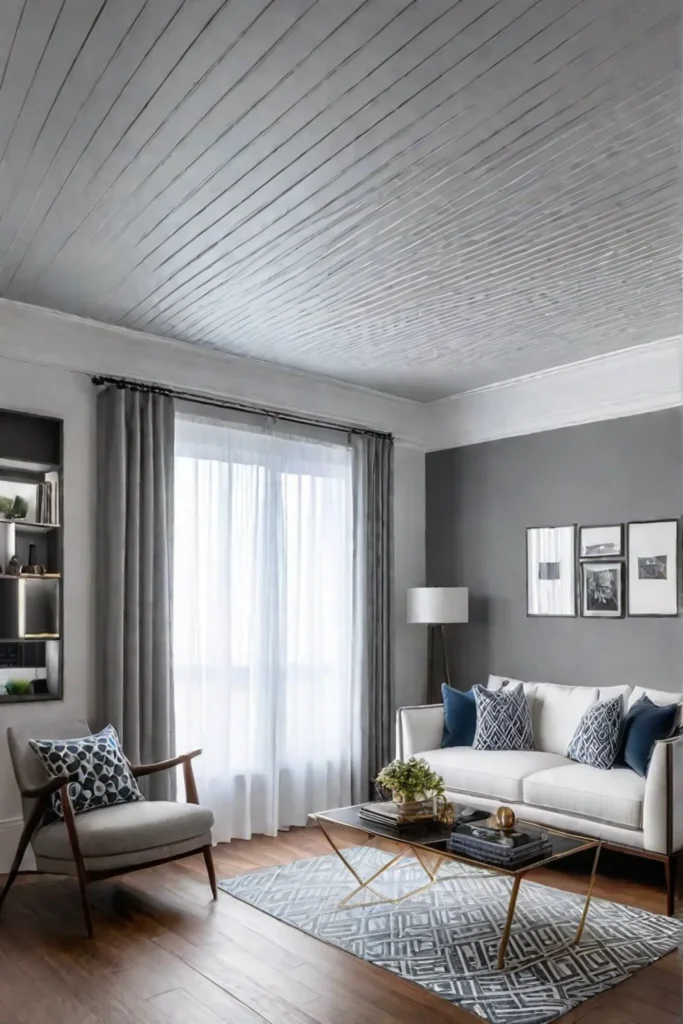
Consider pairing light-colored wallpaper with white or light-colored furniture to amplify this effect. This cohesive palette will create a seamless flow, enhancing the spaciousness. Additionally, strategically placed mirrors can work wonders, reflecting light and creating the illusion of depth.
When it comes to lighting, placement is key. Opt for overhead or ceiling-mounted fixtures that evenly distribute light throughout the room, maximizing the brightening impact of your light-colored wallpaper. Remember, the goal is to create a harmonious interplay of color, light, and texture, resulting in an open, airy, and inviting space.
Vertical Patterns: Drawing the Eye Upward
If light colors are the foundation for creating an illusion of spaciousness, vertical patterns are the architectural elements that elevate the design. By strategically incorporating vertical lines, stripes, or botanical patterns, you can harness the power of visual perception to make your small living room appear taller and more expansive.
The psychology behind this technique is simple yet effective. Our brains perceive vertical lines as extending upward, creating a sense of height and depth. Studies have shown that vertical stripes can make a room appear up to 30% taller, a remarkable feat for a simple pattern.
When selecting vertical patterns for your small living room, consider stripes, panels, or botanical designs incorporating vertical elements. These patterns add visual interest and create a sense of depth and openness that defies the room’s dimensions.
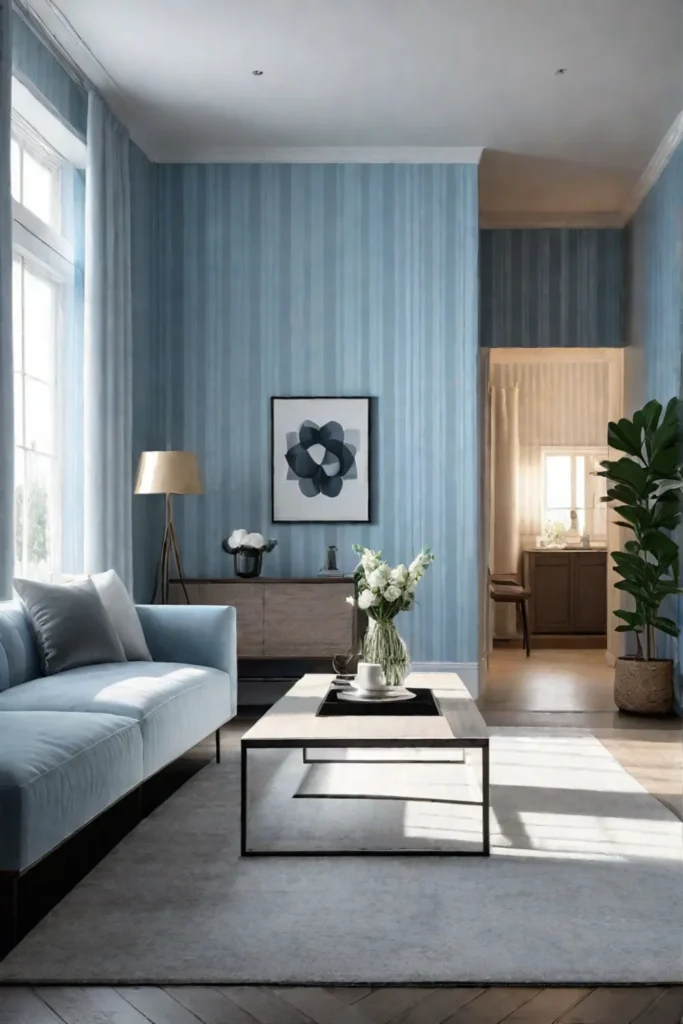
To maximize the expansive effect, strategically place vertical patterns on the wall opposite the main entry point. This placement will immediately draw the eye upward, creating a sense of depth and height that extends beyond the room’s physical boundaries.
Additionally, coordinate your vertical wallpaper patterns with tall, slender furniture, such as floor lamps or bookcases. This harmonious combination reinforces the height illusion, creating a cohesive and visually appealing space.
Mirrored Wallpaper: Reflecting Depth and Dimension
If you’re seeking a truly transformative element for your small living room, look no further than mirrored wallpaper. This dazzling design choice not only adds a touch of glamour but also creates the illusion of depth and doubles the perceived size of the space.
The psychological impact of mirrored surfaces in interior design is undeniable. Our brains perceive mirrored surfaces as extending space, creating a sense of depth and spaciousness that can make even the most compact living room feel expansive.
Studies have shown that mirrored wallpaper can make a room appear up to 50% larger, a staggering figure highlighting this design element’s power. To maximize this effect, strategically place mirrored wallpaper opposite windows or light sources. This placement will amplify the brightening effect, reflecting light and creating an illusion of depth that seemingly extends beyond the room’s physical boundaries.
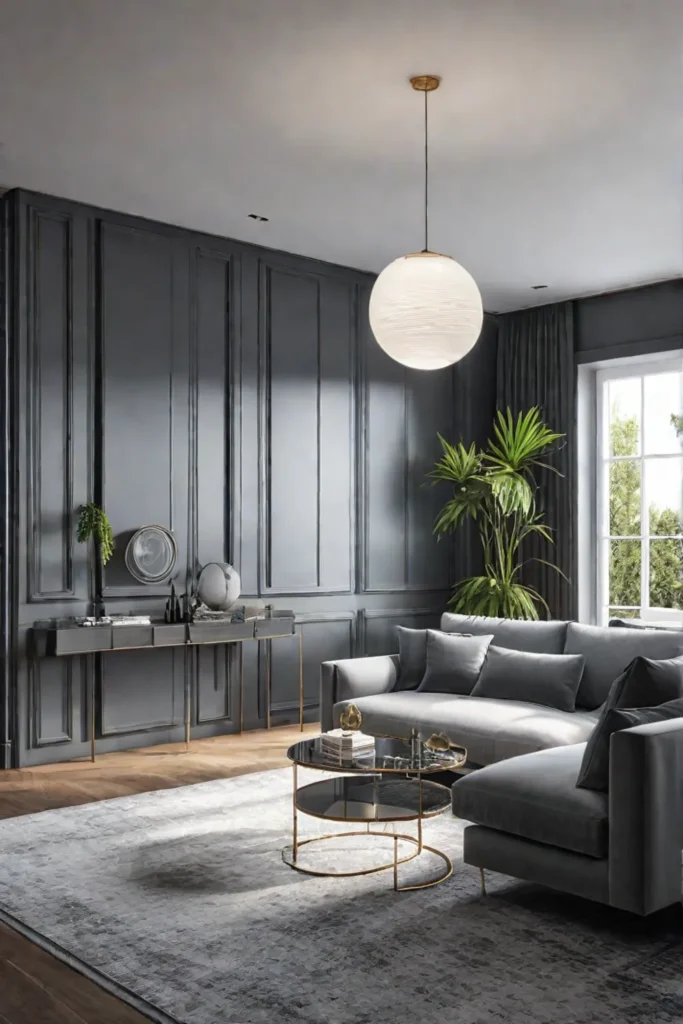
When incorporating mirrored wallpaper, consider coordinating it with reflective furniture and accessories. This cohesive approach will create a harmonious and visually appealing design scheme that enhances the expansive effect.
However, it is essential to balance and avoid overwhelming the space with too many mirrored surfaces. Strategically place mirrored wallpaper around architectural features, such as alcoves or fireplaces, to create focal points that draw the eye and enhance the sense of depth and space.
Strategic Placement: Guiding the Eye and Creating Depth
Strategic placement of wallpaper can be a game-changer in the art of transforming small living rooms. By carefully considering focal points, visual anchors, and architectural features, you can use wallpaper to guide the eye and create a sense of depth that defies the room’s dimensions.
One powerful technique is highlighting a focal point, such as a fireplace or built-in shelving, with a bold wallpaper pattern. This approach immediately draws the eye, creating a visual anchor that adds depth and interest to the space. Alternatively, framing a window or doorway with contrasting wallpaper can create the illusion of depth, making the room feel more expansive.

Another strategy is to use wallpaper to visually connect different areas of the small living room, creating a cohesive flow that enhances the sense of depth and space. For example, placing a similar pattern on a bookshelf and the wall behind it can make a seamless transition, tricking the eye into perceiving a larger, more open space.
When implementing these techniques, it’s crucial to consider the scale and proportion of the wallpaper patterns. Oversized patterns can overwhelm a small living room, while delicate designs may get lost. Finding the right balance is key to achieving the desired expansive effect.
Embracing the Art of Wallpaper Magic
In small living room design, wallpaper is a powerful tool that can transform even the most compact spaces into inviting havens of warmth and comfort. By understanding the psychology behind color, pattern, and placement, you can harness the magic of wallpaper to create the illusion of spaciousness and depth.
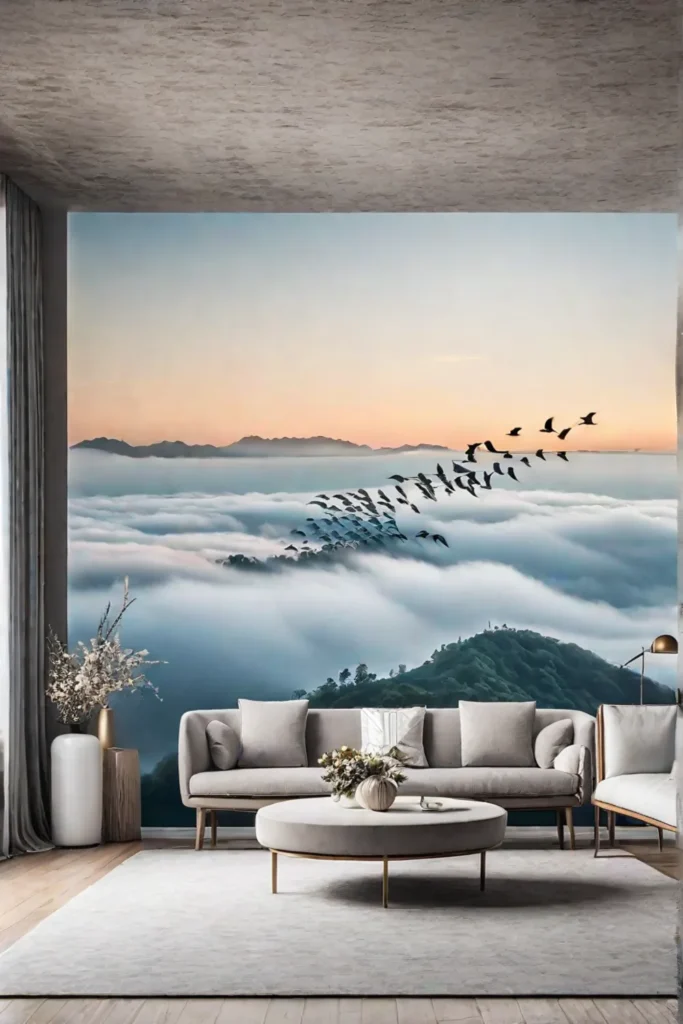
Whether you embrace light-colored wallpaper, vertical patterns, mirrored surfaces, or strategic placement, the key is approaching each design decision thoughtfully and intentionally. Remember, every element you introduce has the potential to redefine the boundaries of your small living room, creating a space that feels open, airy, and full of character.
So, embrace the art of wallpaper magic, and let your small living room become a canvas for your creativity and personal style. With the right approach, even the most modest spaces can become sanctuaries that inspire and delight, reminding us that true beauty often lies in the most unexpected places.
